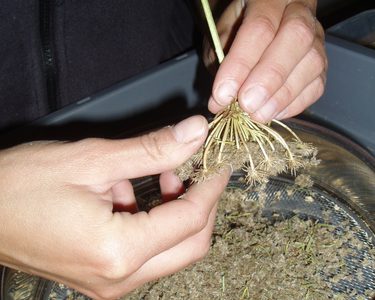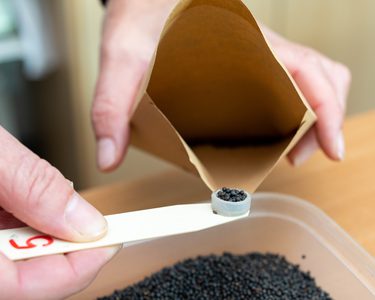How you source your seeds

How we source our seed is an important factor influencing our food security. For centuries, we have saved seed and through a process of selection, generated heirloom varieties that are adapted to local conditions. It's only more recently that production of our varieties has been taken into the hands of commercial interests, bringing with it, the risk that we restrict the diversity of what is grown.
In our survey, we wanted to get a greater understanding of the motivations that influence your seed-buying choices.
Where do you get your seed from?
People obtained seed from a mixture of sources. Gardening catalogues were by far the most popular with more than 85% of participants obtaining seed from this source. It's encouraging that almost 70% of respondents also saved some of their own seed, and a high proportion used up old seed.
Only 26% of participants sourced seed from a garden centre, and surprisingly, only a small proportion (16%) sourced their seed from seed swaps. A very small proportion obtained seed from supermarkets.
“I'm always tempted by the bargain special offers from some seed companies but results are sometimes mixed. Home saved wherever possible is my favourite.”

What are the values that influence where you get your seed from?
Sourcing seed from an ethical supplier was the most important consideration among participants with 63% rating this as important. Sourcing organic seed, obtaining favourite and heritage varieties were also important to more than 50% of participants.
A number of participants mentioned a number of preferred ethical organisations that they obtained seed from. Price was not such an important consideration among this group of participants, with only 23% stating that this was important.
One person stated: “I'm always tempted by the bargain special offers from some seed companies but results are sometimes mixed. Home saved wherever possible is my favourite.”
Choosing varieties
Trying and evaluating new varieties is important for adapting to new conditions, although gardeners growing in a small space may only be able to try a few varieties at a time. There is also the danger that spurious conclusions can be drawn from growing a different variety each season.
Almost twice as many respondents liked to try new varieties (61%) rather than mostly growing the same ones (37%), with several stating that they enjoyed ‘trying out new varieties’.
Good flavour was important to the majority (89%) of participants, with reliable yields (62%), pest and disease resistance (60%) and heritage (50%) also being important. One participant stated that they tended to choose pretty varieties or ones with a good story as this is what made growing fun.

F1 hybrids
F1 hybrids are grown by crossing two different parent lines resulting in a variety that is much more uniform than an open-pollinated variety. Seed cannot be saved reliably from F1s so the grower is dependent on the seed company for purchasing seed each year. Some people believe that the increasing use of F1s is a threat to biodiversity, and undermines the traditional networks for saving seed developed by growers.
Among the group that took the survey, there appeared to be a good level of understanding of what an F1 hybrid was, with 72% stating they fully understood, and a further 37% having a partial understanding.
A staunch 25% of participants always avoided using F1 hybrids completely and a further 50% tried to find alternatives to F1s where possible.
Many also highlighted the benefits of being able to save seed from open pollinated seeds.
The use of F1 hybrids wasn’t a clear cut story as a number stated that it depended on the crop and that there are a number of useful traits such as blight resistant tomatoes that were mainly available in F1 varieties. Others also said that for some crops, such as courgettes, it was difficult to avoid F1s.
A few said that the vigour of F1s in crops such as brassicas made it easier to grow in a UK climate where you had a short growing season. The complexity of this issue was borne out when we carried out a statistical test (using Chi squared test) to see if people that saved their own seed were more likely to avoid F1 hybrid varieties. There was no significant correlation, so this supports the story that people who save some of their own seed, might also grow F1 hybrids.